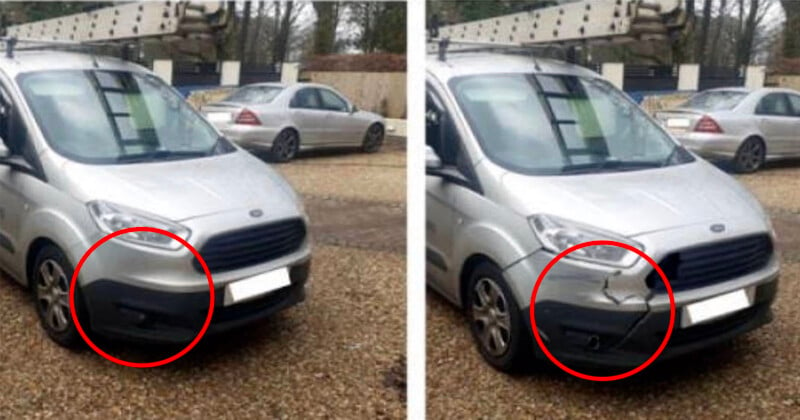Fraudsters Are Editing Photos of Damaged Vehicles to Claim Insurance

Car insurers in the United Kingdom are reporting an increase in the number of cases where photos are being manipulated by fraudsters.
Scammers are using so-called “shallowfake” technology that utilizes editing software on phones and apps such as Adobe Photoshop.
Two insurers, Allianz and Zurich, tell The Guardian that incidents where apps alter images of cars to make it look like they’re damaged have risen 300 percent between 2021-22 and 2022-23.
Allianz tells the British newspaper that it is showing “all the signs of becoming the latest big scam to hit the insurance industry.” In one case, a tradesman had a photo of his van lifted from his social media page by scammers who then doctored cracks on the front bumper and sent a fake repair invoice for more than $1,255 (£1,000)
Matt Crabtree, LV’s head of financial crime intelligence, tells The Times of London fraudsters are using the technology for “their own illegal purposes and to target innocent members of the public to make a profit”.
Crime Costs
With car insurance costs in the U.K. being pushed to record levels, the insurers are attempting to play the crooks at their own game by using the technology to detect fraudulent claims; turning to a voice analytics tool called Clearspeed to detect scammers.
But the offenders are tryimg all sorts of ways to extract money — including adding fake license plates onto vehicles that have been totaled.
“We have seen an increase in people locating total loss vehicles on salvage agents’ websites and then implanting a registration number onto that car. There are then claims made for that vehicle, and a claims handler assessing this claim would take that at face value — that it is that actual vehicle,” Scott Clayton, head of claim fraud at Zurich U.K., tells The Guardian.
Clayton describes it as an “emerging threat” and image editing software programs are getting so good they can make a picture of a building that has “impact damage or a broken window.”
“People can now create a fraudulent claim entirely from behind their computer and extract significant sums of money because these cars are total losses,” he adds.
In the U.K., drivers pay an average price of $800 (£635) for a year’s worth of comprehensive motor insurance. A record price that is being driven, in part, by rising levels of fraud.